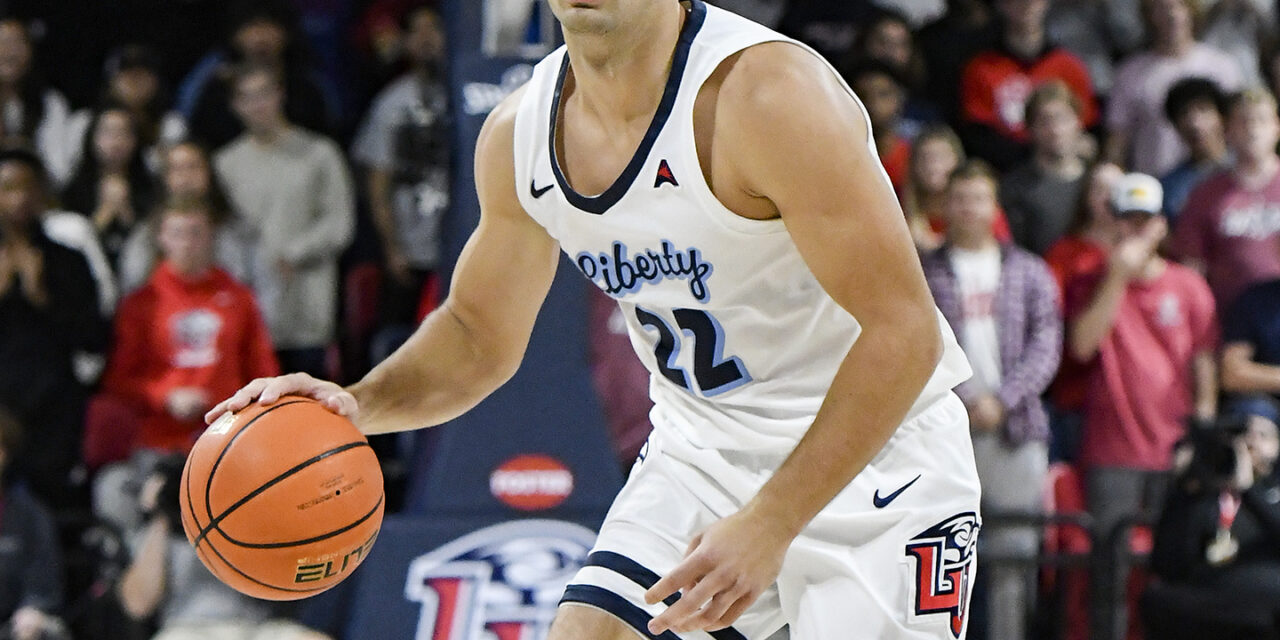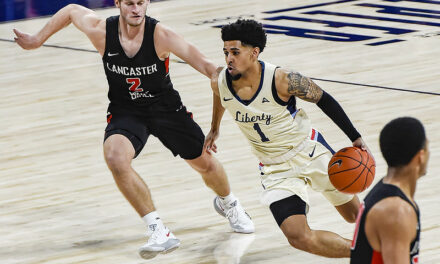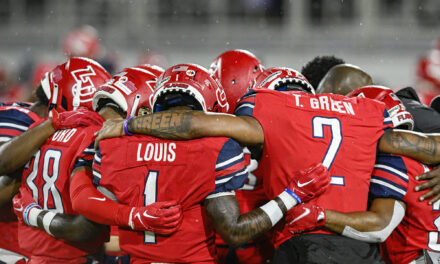In an article published earlier this season, I noted the importance of Kyle Rode being aggressive offensively if the Flames want to compete at a high level this season. Rode currently averages 8.2 PPG, 4.3 RPG, and 4.0 APG. Additionally, he is shooting 48 percent from the field and 46.7 percent from three-point distance. His shooting percentages may draw some attention for the average fan, but Kyle’s progress is much more substantial than meets the eye.
Through the first ten games of this season, Rode averaged just 3.9 PPG, 3.7 RPG, and 3.3 APG. Most shockingly, Rode’s consolidated plus/minus was -44.2 through the first nine games (from the LSU to Stephen F. Austin games). With Rode being a point forward, this stat should at least reflect a positive.
Liberty head coach Ritchie McKay is on record stating he doesn’t look at plus/minus, and it is a stat that often gets too much attention. However, if the plus/minus of a player swings to an extreme, it clues us into a player’s impact on the game. This can be seen by observing a player’s NET, or what he or she is contributing on both ends of the court combined. Kyle was struggling, consistently receiving a negative NET for all but one game from LSU to SFA (he was NET positive against Delaware State at +4.9).
Things changed for Rode when the Flames faced East Carolina University. It was a confidence-boosting win for both the team and Kyle. After that game, Rode began to stack better performances, still trying to find a consistent pattern of play. But, conference play has been an altogether different story from his first nine games.
During ASUN play, Rode’s plus/minus sits at 8.5, his effective field goal percentage is at 66.0%, and his true shooting percentage is 70%, which is considerably high. Bringing it back to basic stats, he is shooting 52.28 percent from the field and has brought his points per game up to 10.9. All of this to say, visually he has taken a turn towards higher production since the start of ASUN play. Here are two reasons why:
1. The cohesion of the Flames.
During the first month to six weeks of the season, the Flames were primarily trying to figure out how all of their roster would fit together. Like a machine made up of many complex parts, the Flames had to figure out just how all these pieces would align to bring about success. Rode’s play style centers around directing and controlling the game through his high basketball IQ.
His leadership is best demonstrated in his elite feel for the game, and his ability to help his teammates play the game at max efficiency. This was difficult during the first half of the season because he needed the machine to be pieced together before he could lead the operation effectively. That takes time, as well as trial and error.
2. Unleashed mindset.
When a point-forward unleashes his full potential, it looks much different than a Darius McGhee scoring prototype. When fully maximized, Rode’s play style demonstrates complete control over offense flow and overall tempo. The average fan will not note this, but all serious observers of the game will notice how play has to flow through the point-forward.
This is done by utilizing ball-handling abilities and defensive strategy/call-outs. This hands-on approach of Rode has made all the difference, leading to a full and balanced stat sheet (i.e. points, rebounds, assist, etc.). That is how you tell if your forward is indeed a point forward and an in-game coach. Rode is allowing himself to maximize his full potential at this end and filling up the stat sheet in the process.
Rode has been electric to watch the past 10 or so games. I fully expect him to continue his collegiate peak throughout the remainder of the Flames’ season.










